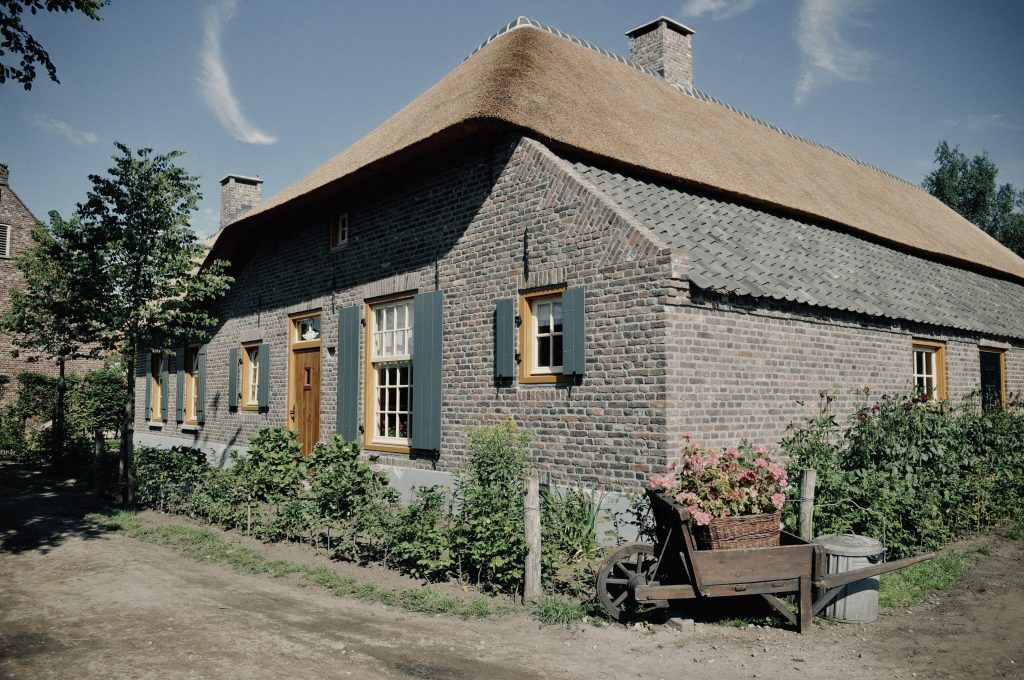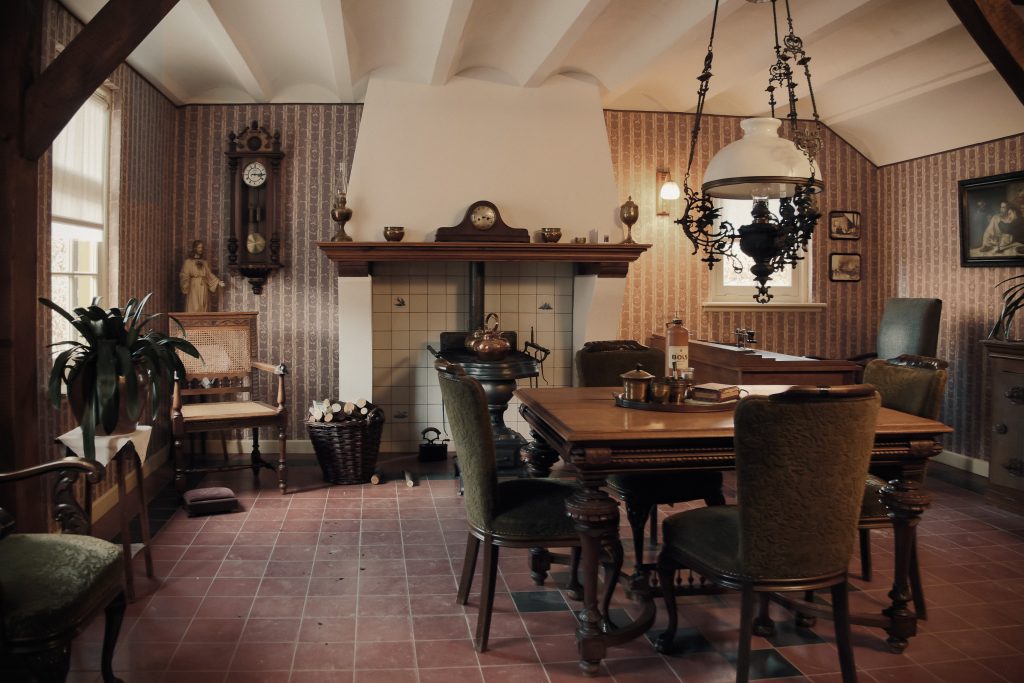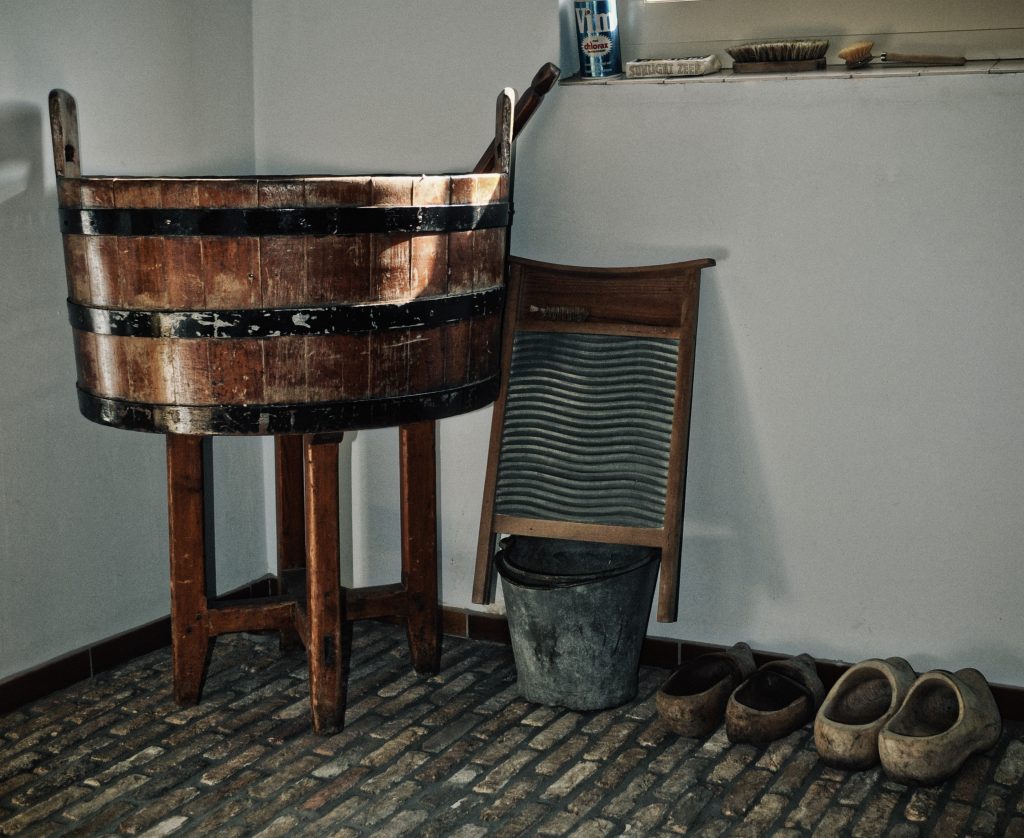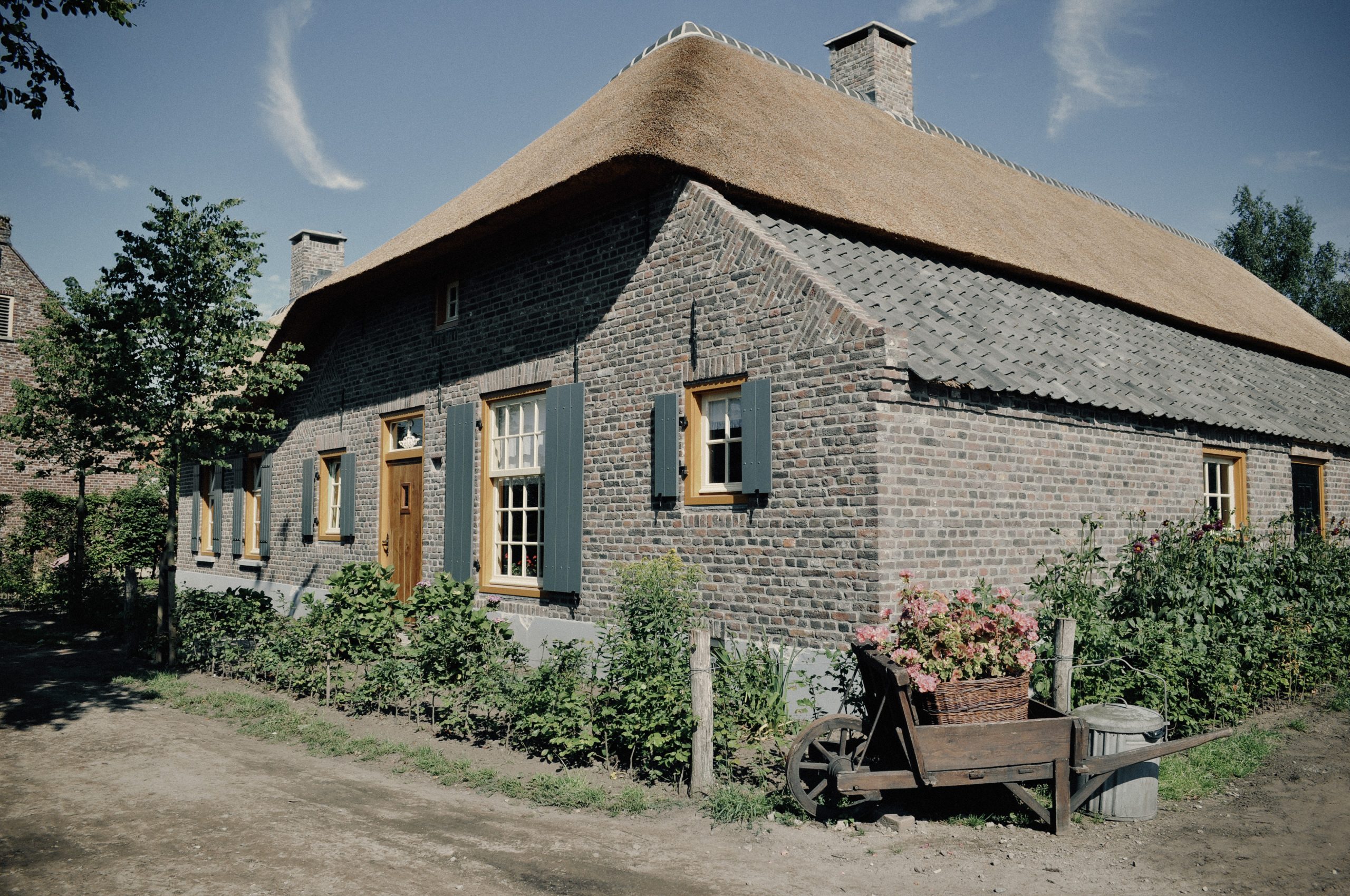
Short-gable farmhouse
The Brabant short-gable farm is a traditional type of farm that is characteristic of this region. These farms originated in the late Middle Ages and were mainly in use until the 19th century.
The most striking feature of these farmhouses is the short gable, the façade that is relatively short compared to the length of the entire building. This design makes efficient use of space and materials. And although the ‘short gable’ appears in the name, these farmhouses belong to the long-gable type, where the house and the stables are placed under one elongated roof. Characteristic of a short-gable farmhouse is that the front door is placed in the short front façade. Many Brabant short-gable farms have a thatched roof, which contributes to the characteristic appearance of the farm.
Cooperative bank for farmers
Around 1900, local farmers’ loan banks were established in almost all towns and villages. At that time, a very reliable farmer from the village was chosen or asked to be cashier. Because they wanted someone who had a little more education, the choice was limited. A lot of farm loan banks were located in farms like this one. The “goeikamer”, as it is called in Brabant dialect, served as an office.
With the arrival of the farmers’ loan bank, the economic position of the farmers improved. Attention was paid to combating the usurious practices of the lenders, who until then had a stranglehold on many farmers due to excessive interest rates and purchase obligations. The name Boerenleenbank was replaced in 1973 by Rabobank, a contraction of Raiffeisenbank and Boerenleenbank.

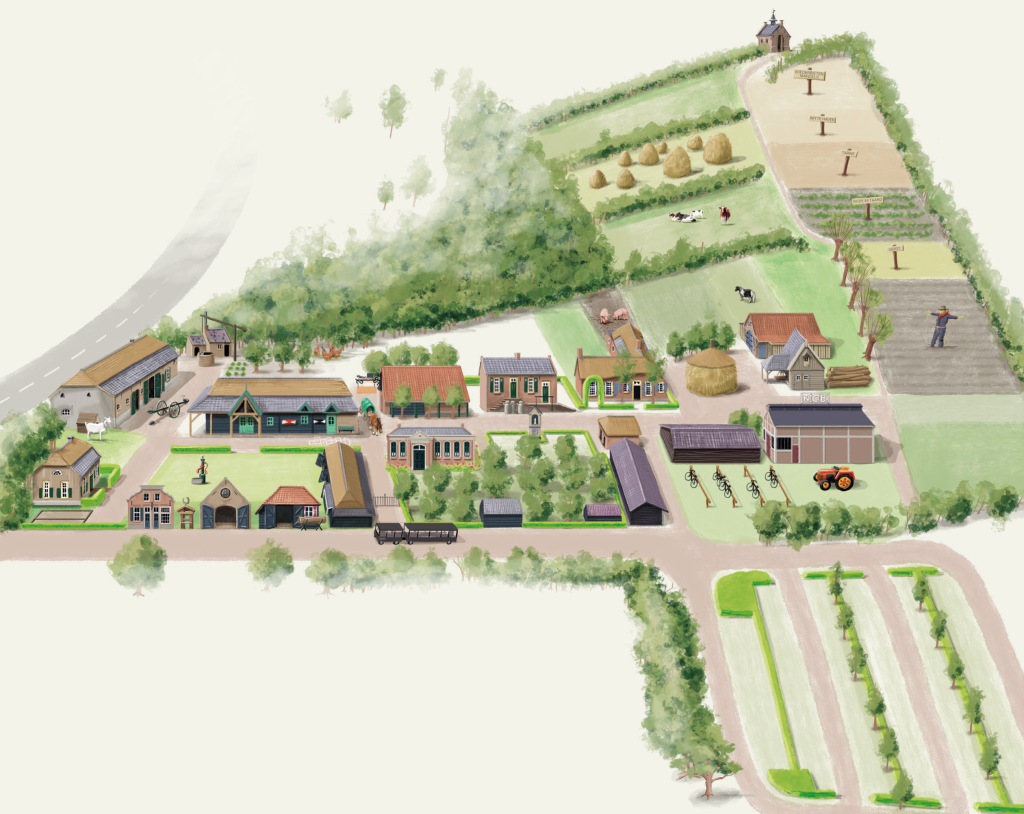
Discover more of the museum
Short-gamble farmhouse at the Boerenbondsmuseum
This short-gable farmhouse near the Boerenbondsmuseum, located opposite the entrance, originates from Beek en Donk. This farm had to make way for new construction. A few years ago, it was dismantled stone by stone and rebuilt in the Boerenbondsmuseum. The old plaque to the right of the entrance still refers to one of the original inhabitants (W. Peters, 1834).

